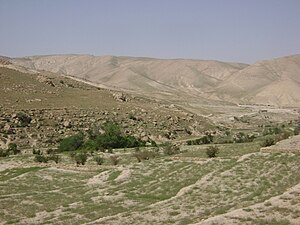Sinjar clashes (2017)
| Sinjar clashes (2017) | |||||||
|---|---|---|---|---|---|---|---|
| Part of the Iraqi Civil War (2014–present), and the Spillover of the Syrian Civil War | |||||||
 Fallow terrace fields in the Sinjar Mountains. |
|||||||
|
|||||||
| Belligerents | |||||||
|
Supported by: |
|
||||||
| Commanders and leaders | |||||||
| Unknown |
(YJÊ commander) |
||||||
| Units involved | |||||||
|
|
|
||||||
| Strength | |||||||
| c. 500 fighters, 30 Humvees (YBŞ claim) | Unknown | ||||||
| Casualties and losses | |||||||
| Unknown number killed, c. 12 wounded(local reports) "Dozens" killed, "dozens" surrendered, 4 captured(pro-PKK claim) |
|
||||||
| Several civilians killed | |||||||
![]() Zardasht Shingali
Zardasht Shingali
(YBŞ commander)
![]() YBŞ
YBŞ
![]() PKK
PKK
The Sinjar clashes of 3 March 2017 occurred between pro-PKK forces, namely the Sinjar Resistance Units (YBŞ) and the Êzîdxan Women's Units (YJÊ), and the Rojava Peshmerga that serve as the Kurdish National Council's paramilitary wing. After KNC forces entered the town of Khanasor in the Iraqi Sinjar Mountains, fighting boke out among unclear circumstances, resulting in dozens of casualties.
The clashes have widely been seen as symptomatic for the high tensions among the forces that fight against the Islamic State of Iraq and the Levant (ISIL) around Sinjar, and the risk that these tensions could escalate into turf wars, which would degrade any attempts to drive the extremist group from the region for good.
...
Wikipedia
